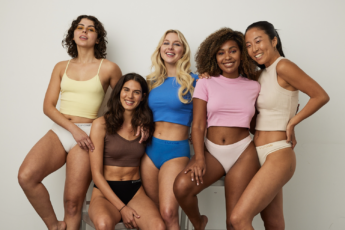As a country, we love fashion and buying new clothes, however, this, unfortunately, means we end up throwing away a lot of them too. Every year Australians throw away 800 million kilograms of new and used clothes, and we also have one of the lowest textile recycling rates in the world, sitting at just 12%. The problem is there, and we definitely need to take action on how to incorporate slow fashion into our lives while contributing to the circular economy. We spoke with Alexis Todorovski , key executive of SCRgroup – Australia’s largest and most innovative company for the recovery of unwanted clothes, and she put together some tips below for keeping your items in the circular economy.
You’ll also like this:
The 14 Best Lightweight Foundations for Breathable and Buildable Coverage
Sustainable Travel Tips by Phil Sylvester from World Nomads
What is Holistic Beauty and How to Achieve It
Embrace Slow Fashion
Have you ever thought about what happens with the clothes when we throw them away? The harsh reality is that the environmental impact of clothing being sent to landfills is incredibly detrimental. Some clothing can take up to 100 years to break down, and during this process, the materials produce methane gas, which is 25 times more warming than carbon dioxide. In addition, dyes in clothes can contaminate soil and waterways.

Two easy ways to minimise your impact are to participate in slow fashion and keep clothes in the circular economy.
- Embrace slow fashion by choosing well and making thoughtful purchases: Invest in high-quality classic items that you can wear again and again and avoid falling for trend pieces. Often outfits we buy for special occasions get worn the least, so if you’ve got a big event coming up, you can always look into hiring a fancy dress or borrowing something from a friend. You can also support the circular economy and important social causes by purchasing from charities, shops and online and local marketplaces.
- It’s important that we keep our clothes in the circular economy where they are reused, repaired and recycled for as long as possible. This ensures that the energy and materials used to create the clothes get maximum use. The annual Circularity Gap Report found that the world is only 8% circular and needs to double to 17% to significantly reduce the chances of global warming.
- Understand the garment composition and mend them where needed. Following the garment care instructions can help your clothes last much longer and looking new and the ultimate goal is to keep them out of landfills. If you’re not handy with a sewing kit, then spending a little at your local tailor to get your clothes fixed will still be cheaper than buying something brand new as a replacement. If you’re feeling adventurous, you can even upcycle and create a brand new outfit. Denim jeans can become shorts, or a t-shirt can be turned into a tank top.
Once your clothes have reached the end of their life or you know that you just won’t wear them anymore, there are still options that don’t include throwing them away. If your clothes are still in good condition, then look into selling them online or at the local markets, swapping them with friends or family or dropping them off at your nearest SCRgroup collection point.
Every year SCRgroup diverts 25 million kilograms of clothes from landfills through their 1,600 collection hubs around the country and pop-up events, home pick-ups, school programs and take-back programs (retailers charities). They offer sustainable solutions for clothes you can’t wear anymore and connects them to local and global circular economies to be reused and repurposed.
You’ll also like this:
8 Makeup Tips French Women Actually Follow
The Best Moisturisers, Serums And Creams For Sensitive Skin This Winter
Everything Your Significant Other Needs For Special Occasions









Leave a Comment